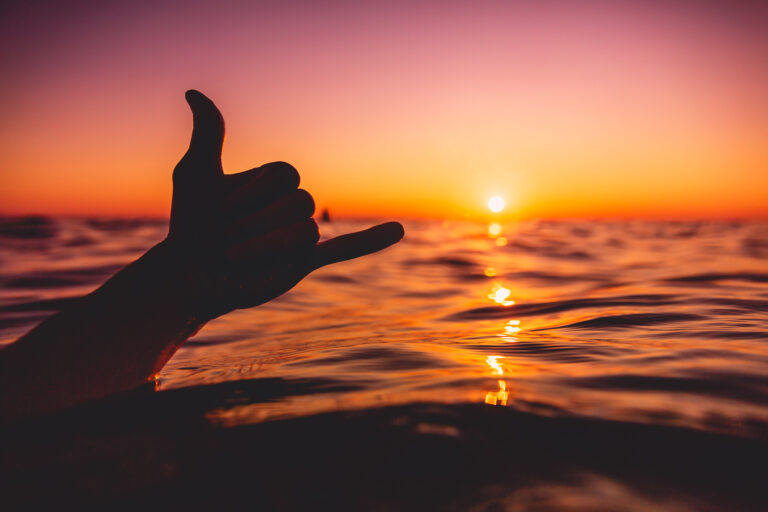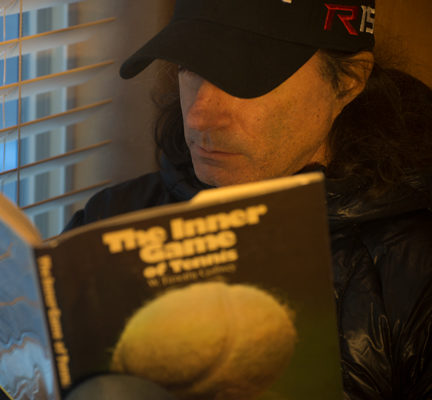IN JANUARY, I came across a snippet about a deadly virus cutting a swath through China’s Hubei Province. I was roughing out plans for the new year. China was far away. The news was easy to ignore.
By March 11, COVID-19 news was erupting from every conceivable outlet. Social media feeds, including Facebook, lit up. No one understood the disease — the doctors on the front lines are still figuring out — but everyone was suddenly proffering their insights on the crisis.
Firsthand accounts leaked out of New York. And then I was connected to the pandemic through a friend’s son, a doctor, who is in charge of testing at Bellevue. His message, which his parents passed along, was unambiguous and freighted with dread. To wit: “You don’t want this thing. It’s a killer. Stay the fuck at home.” I caught a whiff of the same concern in the hundreds of posts, emails, and texts that friends and colleagues were flinging around the aethersphere. We were all attempting to make sense of the deadliest disruption to civilization we’d ever known.
Nearly 800 people died in Italy on March 21, but many within my Facebook circle still hadn’t gotten the message — or had chosen to ignore it. They hung outdoor action shots on their feeds. A media outlet published an adventure narrative about a 2018 traverse of the Mont Blanc range at the same time the Peloton de Gendarmerie de Haute Montagne were patrolling the massif to enforce the shuttering of the Alps. Other friends were linking to stories published in the New York Times and elsewhere about how backcountry riders were triggering avalanches or spreading COVID-19 to rural ski resorts. Outdoor manufacturers were releasing branded videos to titillate the nerve endings of extreme athletes.
Outraged at the void between the dreadful reality and the joie de vivre depicted online, I became the worst kind of online scold: a Facebook scourge. When a late-season snowstorm replenished Sierran slopes, I wrote an anticipatory post along the lines of, “I really don’t want to see your fucking powder shots.” I condemned outdoor athletes posting to social media as “blinkered adventuristas drawn to the unsustainable pursuit of the neverending yaya.” I inveighed against brand ambassadors and influencers throughout the outdoor recreation ecosphere who were mindful to tag their sponsors on their “I’m staying home and so should you” Instagram feeds. (Because the only thing worse than a pandemic is a missed branding opportunity, right?) And so on.
While governors were issuing shelter-in-place orders and first responders were pleading with the adventure-minded to follow their bliss into the privacy of their homes, some Reno friends and neighbors were dangling their exploits in lurid texts and emails. “Here’s how we social distanced last week,” one of them announced, his email decorated with a photo of freshly tracked windboard somewhere on the flanks of Mt. Rose. A text rolled in from another: “Skied powder stash yesterday, starting at the shoulder of the east ridge of Mt Rose. One of your backyard ski runs. The first 2000’ were sweet, on old powder.” These were progressive liberals and environmentalists whose kinship, I had presumed, was based on a shared worldview. Why had they chosen to recreate in the midst of the COVID-19 pandemic, while I remained at home and walked the bone-dry streets of my neighborhood? Wasn’t the mountain road to gain Mt. Rose Summit tortuous and fraught? Weren’t there inherent risks in skiing on transitioning snow? And yet, they had voted with their appetites, getting the goods while the getting was good: the same metastatic impulse underlying the larger problem: the anthro in anthropogenic. What happened to sacrifice? What happened to symbolic solidarity? Which side are you on, boys?
John Dittli, a longtime friend from the Eastern Sierra, called last week. “You okay Brad?” he asked, and I could sense his gimlet eye piercing the aether between his phone and mine. I laughed. John, I knew, had occasionally commented on my Facebook diatribes and potshots, and he was tumbling through the crisis himself. At 63, John has logged over 4,000 backcountry days by boot and ski in the North Cascades and the Sierra Nevada in a career that now spans five decades. Come winters, the 3,500-foot draw on Red Mountain above his home is garlanded with hundreds of tightly coupled, unbroken turns: Dittli’s spoor.
Enlarge

John Dittli Collection
But John had racked his skis for good on March 13 after his last powder run. “Protestant guilt!” he told me when I asked him why, and he gave a similar soundbite to a reporter for the Reno Gazette-Journal a few days later who shone a light on athletes like John who had forgone spring skiing to respect the stay-at-home mandates and requests by land managers, SAR teams, professional guides, avalanche centers, medical professionals, municipalities, counties, and the governors of Nevada and California. “I can’t just live my life like nothing is happening in the world,” John told the reporter. A few days later, John posted a 540-word essay to his Facebook feed, explaining why he’d ceased skiing and railing at those who hadn’t.
“So why all the anger toward the people that continue with their passions?” John wrote. “Well to me there is one word to describe the base for my anger; insulting. It is insulting to me and the thousands of other backcountry riders that have hung up their boards.” Not only insulting, he explained, but also disrespectful to every official and healthcare provider in every community begging skiers to stay away.
John’s cri de coeur garnered nearly 500 comments, was hailed by the vast majority as spot-on, and given props by the well-known backcountry skiers Lowell Skoog and Davey McCoy. John’s thesis was strikingly similar to my own, with one difference: while I was still furious, John had moved on. “I’m passionate about this, but it’s not a big enough issue to lose friends over,” John told me when I checked in with him a few days after he published his essay. “I was angry and got past it.”
I looked forward to getting past it. But past what, precisely? “We are grieving the world we have now lost,” said thanatologist and grief expert David Kessler in a March 26 interview with NPR’s Michel Martin, whose segment explained how to cope with loss during the pandemic. Kessler co-authored two books with the late Swiss psychiatrist Elisabeth Kübler-Ross, whose 1969 On Death and Dying described the five-step coping process that occurs between a terminal diagnosis and the end of life: denial, anger, bargaining, depression, and acceptance. Kessler prefaced the remark with the observation that he had been hearing accounts of people feeling heavy, or heavy sadness. “And really, when I hear what they’re saying, they’re describing grief,” he said.
By Kessler’s definition, I was in the thick of my own grief and my denial had turned swiftly to anger. Change is grief, explained Kessler. We grieve disruptions, which are by definition unasked for and unexpected. As a society, we’ve grown accustomed to quick fixes. That’s not going to happen with COVID-19, which is changing everything, including outdoor adventure.
Kessler averred that the Kübler-Ross model was never meant to be construed as linear. “They’re not five easy steps,” Kessler told Martin. “Our grief is as unique as our fingerprint. There’s no map for grief. Everyone does it differently.”
Fine. I was grieving. And grieving, pardon the trope, was a journey, but its course was anything but lockstep and was, in fact, apt to flip back on itself with each shock following the first massive one that reshaped everything. “Everyone’s struggling in ways we don’t always understand,” Kessler had said. “So we should try to be kind.”
So let’s be kind. None of us has been here before. We’re all grieving in ways we can’t entirely understand. For some, that might mean behaving irrationally, as if things are the way they’ve always been. They’re not. Enter cognitive biases.
While John had leaped Bodhisattva-like from denial to anger to a kind of acceptance, I wasn’t so nimble or enlightened. Like most others, I struggled with the new norms of the COVID-19 era, which even extended to the ethics of outdoor recreation. I decided to go one way; others had decided on another. There’s sadness in that. But there’s a greater sadness in glimpsing the horrific truth: we’re collectively mourning the loss of pre-COVID-19 normalcy that never really was. At best, it was an unsustainable illusion; a death trap; a chimera.
When John and I last spoke, he was on his deck looking due east at the White Mountains, eastern California’s other high range. The view was stunning, he said. Actually, the word he used was “classic,” and he compared the snow cover to a recent time when he skied alone for a week across a high steppe called the Pellisier Flats. We discussed traveling over the Sierra’s spring snowpack in our minds this year rather than on skis: a minuscule sacrifice, given the death and chaos. “The corn cycle is still a few weeks off,” John allowed, referring to the metamorphosis that occurs each day when the sun liberates the surface of very hard snow to soften it just enough to ski it without much effort or fear. “We’ll see. Maybe things will have changed by then.”
Yes. We’ll see. ![]()
A longtime habitué of the Sierra, Sustainable Play’s founding editor, Brad Rassler, enjoys writing about the science and sociology of adventure. At home in the foothills of Nevada’s Carson Range, he and his partner raise neither children nor chickens.







